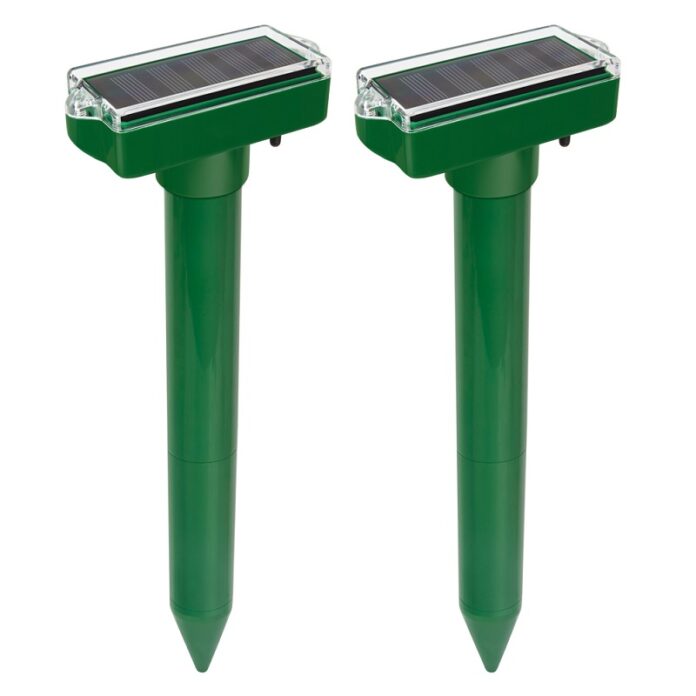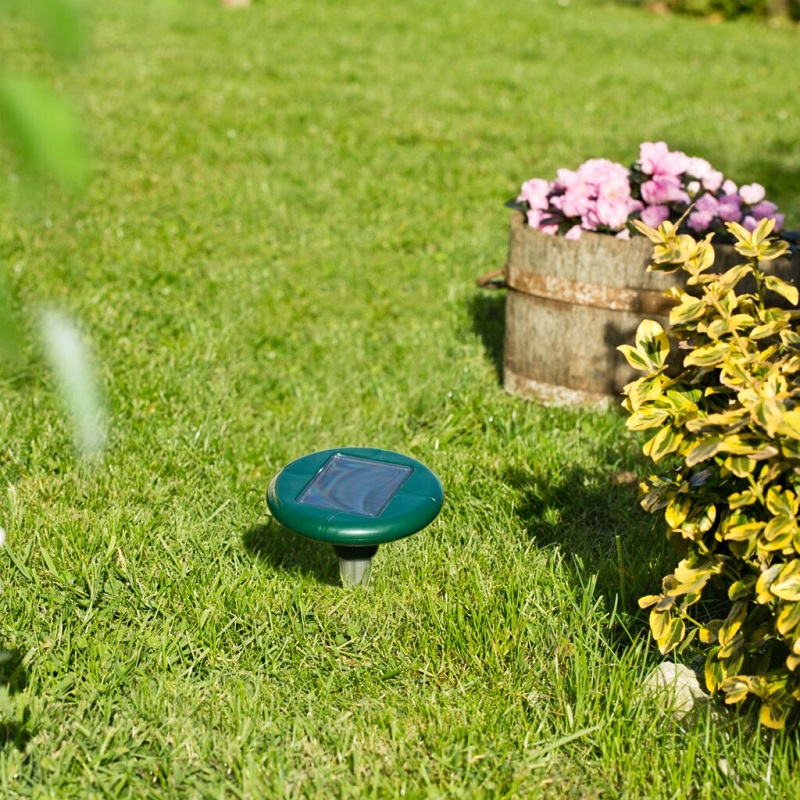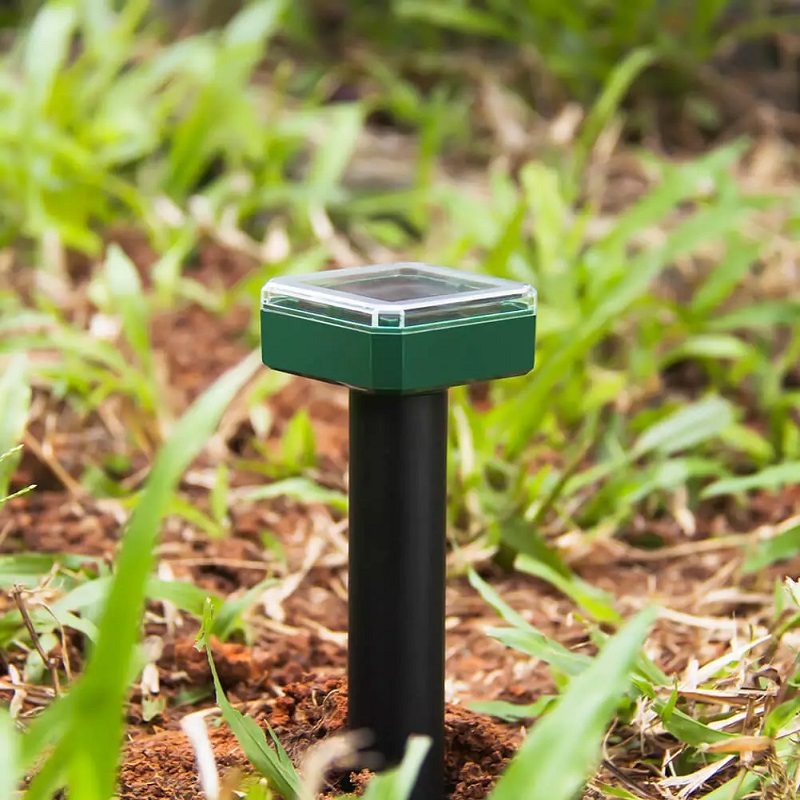What is a Mole Repeller?
I was perplexed the first time I heard about a mole repeller. Could it be a poison or a bug trap as there are for bugs? That was not something I want. Even if my garden doesn’t, I enjoy moles. In addition, I didn’t want to use chemicals on my grass.
However, I learned that a mole repeller, whether solar or not, is a gadget that you put in your garden. The gadget employs ultra-high-frequency sound waves, sometimes known as ultrasonic waves, to drive animals insane. It’d be like having the sound of nails on a chalkboard playing on a loudspeaker all the time.
No mole is going to stay for that type of commotion. As a result, they escape. Like, run to the hills because the devil is following us.
That’s OK with me.
How to Pick the Right Solar Mole Repeller?
Most mole repellers are essentially the same, they work to repel these pests from your home. They are staked in the ground, powered on energy (either solar or conventional), and employ ultrasonic sound to repel pests. However, there are a few factors to consider while looking for the finest solar mole repeller.
How Long Does it Take for the Solar Mole Repellent to Charge?
The problem with solar-powered mole repellers and other solar gadgets is that they take a long time to charge. This charging time varies by climate — Alaska versus Hawaii: which gets more sunshine hours year-round? – and particular location. This charging time is also affected by the efficiency of the individual solar unit.
Most solar devices worth their salt should charge in 6 to 8 hours or less for a full night’s run time.
How Long Does the Solar-Powered Mole Repeller Run?
The second critical component of your selection is to determine how long the best sonic mole repellers last. Do they leave after a couple of hours, or do they work for you 24 hours a day, seven days a week? Check out the solar-powered mole repeller reviews from real-world consumers to validate the makers’ claims.
How Much Area Does the Solar Mole Repeller Cover?
The third and last thing to ask while looking for the finest sonic mole repellers is how large the repeller is. If you have a little yard, you can probably get away with almost anything. However, if you have a plot of land that you want to maintain mole-free, you’ll need to know how much area is covered and how many repellers you’ll need to purchase.
How Do Solar Mole Repellers Work?
The obvious next question is, “How do solar repellents work?”
Solar cells, also known as photovoltaic cells, are positioned in direct or mainly direct sunlight. These are typically seen on top of a mole repeller. The solar cells then absorb sunshine and daylight, allowing them to operate even when there is cloud cover, and transform this solar radiation into usable electrical energy.
Mole repellents and other “built-in” solar gadgets have no wires or cables and do not require electricity. They may or may not have a rechargeable battery backup – but the good ones will – that maintains a charge for the hours when the repeller is not powered by sunlight.
Do Solar Mole Repellers Actually Work?
But the real question is, do these things work? I’ve previously utilized insect repellents in my kitchen. I turned on the ultrasonic gadget over the stove and left them to work. Mole repellers employ frequencies that are comparable to insect repellers.
These things, in my own experience, work. My cat, on the other hand, was not pleased. There will be no more mice for her to hunt in the back room! And no insects for her to jump on while we weren’t looking.
Other people’s experiences have been mixed.
The majority of the material I’ve discovered in my searches on whether or not solar-powered mole repellers work is that individuals have some success – when used correctly – with mole repellers for at least a short amount of time.
Many, however, have stated that the success rates are merely ephemeral. Animals can become accustomed to the sound of ultrasonic waves, much as people can become accustomed to the sound of dogs barking at anything, and so cease fleeing. Other animals, on the other hand, continue to dislike the sound and avoid it.
However, some people have discovered that by repositioning the mole repellers every few days, the creatures are less likely to become used to the sound.
It’s also worth noting that if you have clay in your yard, it’s the best medium for successfully transmitting the acoustic pulses. For the greatest effects, place the mole repellant here.




















